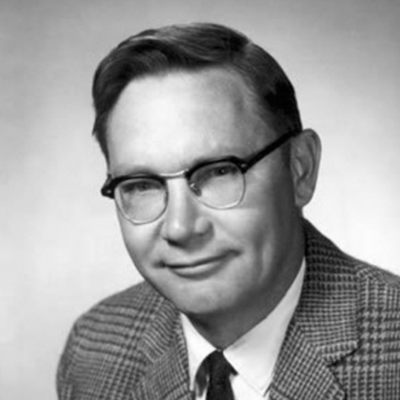James McDonald was an American physicist best known for his UFO research. He was senior physicist at the Institute for Atmospheric Physics and professor in the Department of Meteorology at the University of Arizona. McDonald campaigned in support of expanding UFO studies during the mid and late 1960s, arguing UFOs represented an important unsolved mystery which had not been adequately studied by science. He was one of the more prominent figures of his time who argued in favor of the extraterrestrial hypothesis as a plausible model of UFO phenomena.
McDonald interviewed over 500 UFO witnesses, uncovered many important government UFO documents, and gave many presentations of UFO evidence. He testified before Congress during the UFO hearings of 1968. McDonald also gave the famous talk “Science in Default” to the American Association for the Advancement of Science (AAAS), which was a summary of the current UFO evidence and a critique of the 1969 Condon Report UFO study. Jerome Clark called the talk “one of the most powerful scientific defenses of UFO reality ever mounted.”
In 1954, while driving through the Arizona desert with two meteorologists, McDonald spotted an unidentified flying object none of the men could readily identify. Though a rather unspectacular sighting of a distant point of light, this sighting would spur McDonald’s interest in UFOs. By the late 1950s he was quietly investigating UFO reports in Arizona, and he had also joined NICAP, then the largest and most prominent civilian UFO research group in the nation. Given his training in atmospheric physics, McDonald was able to examine UFO reports in greater detail than most other scientists, and was able to offer explanations for some previously unexplained reports. Using his security clearance with the US government, he also uncovered a number of well-documented UFO reports from the US Air Force’s Project Blue Book, which he judged deeply puzzling even after stringent analysis.
By the mid-1960s, McDonald began speaking about UFOs more openly. McDonald’s first detailed, public discussion of UFOs was in a lecture given before an American Meteorological Society assembly in Washington D.C. on October 5, 1966. Entitled “The Problem of UFOs”, McDonald’s speech was the first of many given to an overflow audience. McDonald declared that scientific scrutiny should be directed towards the small number of “unknowns”, which he defined as a UFO reported by a “credible and trained observer as machine-like ‘craft’ which remained unidentified in spite of careful investigation.” He noted that the vast majority of UFOs could become Identified flying objects, and, in his estimation, only about 1% of UFOs were true “unknowns”. McDonald also lambasted the U.S. Air Force for what he saw as their inept handling of UFO studies.
In 1967 the Office of Naval Research granted McDonald a small budget in order to conduct his own UFO research, ostensibly to study the idea that some UFOs were misidentified clouds. He was able to peruse the files of Project Blue Book at Wright Patterson Air Force Base, and eventually concluded that the Air Force was mishandling UFO evidence. Following the Robertson Panel’s recommendations in 1953, the Air Force was following a debunking directive towards UFO reports, and only discussing UFO cases which were considered solved by a mundane explanation. All unexplained UFO cases were classified “secret” and not released to the public.
McDonald was particularly disturbed that astronomer J. Allen Hynek, had not alerted the scientific community to the fact that Project Blue Book was withholding some of the most anomalous and compelling UFO reports. Hynek argued that if he had exposed this, the Air Force would have dumped him as Blue Book’s consultant; Hynek was the only scientist formally studying UFOs for the government. This was the beginning of a rift between the two men that would never be entirely reconciled.
From the mid-1960s, McDonald devoted much of his time to trying to persuade journalists, politicians and his colleagues that UFOs were the most pressing issue facing American science. He gave dozens of lectures, and wrote volumes of letters to newspapers, to his peers and politicians. McDonald wrote to the Air Force Office of Scientific Research, arguing that they needed to radically shift what he saw as their superficial perspective towards UFOs. In response, the Air Force determined that they needed to “fireproof” themselves against McDonald’s statements because of his unquestionable qualifications and credibility.
In the 1970s, McDonald’s UFO efforts took a significant toll as be became professionally isolated and his marriage faltered. In March, 1971, McDonald’s wife Betsy asked for a divorce. McDonald seems to have started planning his suicide not long afterwards. He finished a few articles he was writing (UFO-related and otherwise), and made plans for the storage of his notes, papers, and research. In April 1971 he attempted suicide by shooting himself in the head. He survived, but was blinded and was recovering in the hospital. The next day he was no where to be found. However, on June 13, 1971, a family, walking along a creek close to the bridge spanning the Canada Del Oro Wash near Tucson, found a body that was later identified as McDonald’s. A .38 caliber revolver was found close to him, as well as a suicide note.
